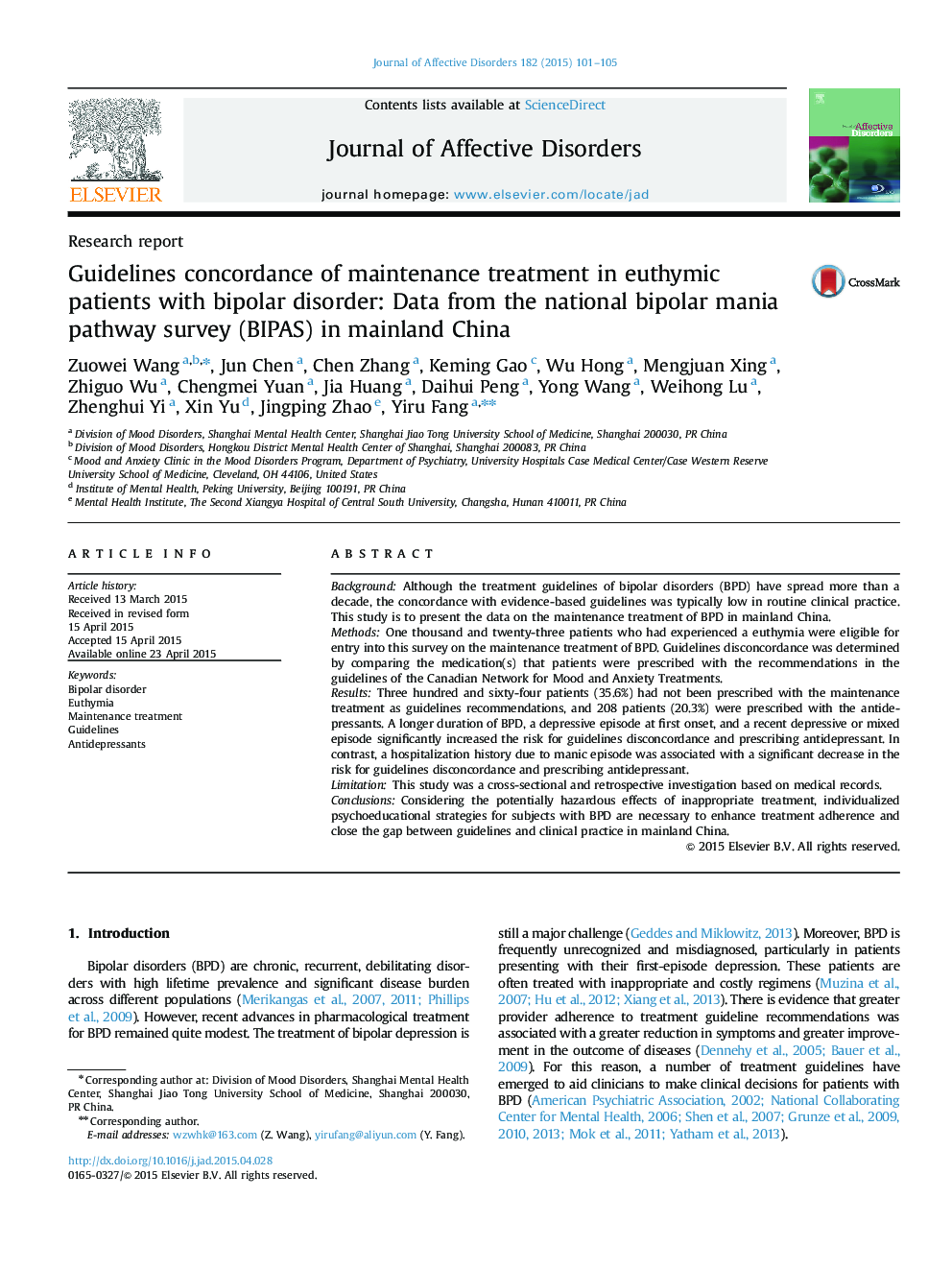| کد مقاله | کد نشریه | سال انتشار | مقاله انگلیسی | نسخه تمام متن |
|---|---|---|---|---|
| 6231541 | 1608143 | 2015 | 5 صفحه PDF | دانلود رایگان |

- This is the first national survey on maintenance treatment for bipolar disorders.
- The disconcordant rate in the present study with guidelines was 35.6%.
- The main reason of disconcordance is the inappropriate use of antidepressant.
- We also find the risk factors related factors to guidelines disconcordance.
BackgroundAlthough the treatment guidelines of bipolar disorders (BPD) have spread more than a decade, the concordance with evidence-based guidelines was typically low in routine clinical practice. This study is to present the data on the maintenance treatment of BPD in mainland China.MethodsOne thousand and twenty-three patients who had experienced a euthymia were eligible for entry into this survey on the maintenance treatment of BPD. Guidelines disconcordance was determined by comparing the medication(s) that patients were prescribed with the recommendations in the guidelines of the Canadian Network for Mood and Anxiety Treatments.ResultsThree hundred and sixty-four patients (35.6%) had not been prescribed with the maintenance treatment as guidelines recommendations, and 208 patients (20.3%) were prescribed with the antidepressants. A longer duration of BPD, a depressive episode at first onset, and a recent depressive or mixed episode significantly increased the risk for guidelines disconcordance and prescribing antidepressant. In contrast, a hospitalization history due to manic episode was associated with a significant decrease in the risk for guidelines disconcordance and prescribing antidepressant.LimitationThis study was a cross-sectional and retrospective investigation based on medical records.ConclusionsConsidering the potentially hazardous effects of inappropriate treatment, individualized psychoeducational strategies for subjects with BPD are necessary to enhance treatment adherence and close the gap between guidelines and clinical practice in mainland China.
Journal: Journal of Affective Disorders - Volume 182, 15 August 2015, Pages 101-105